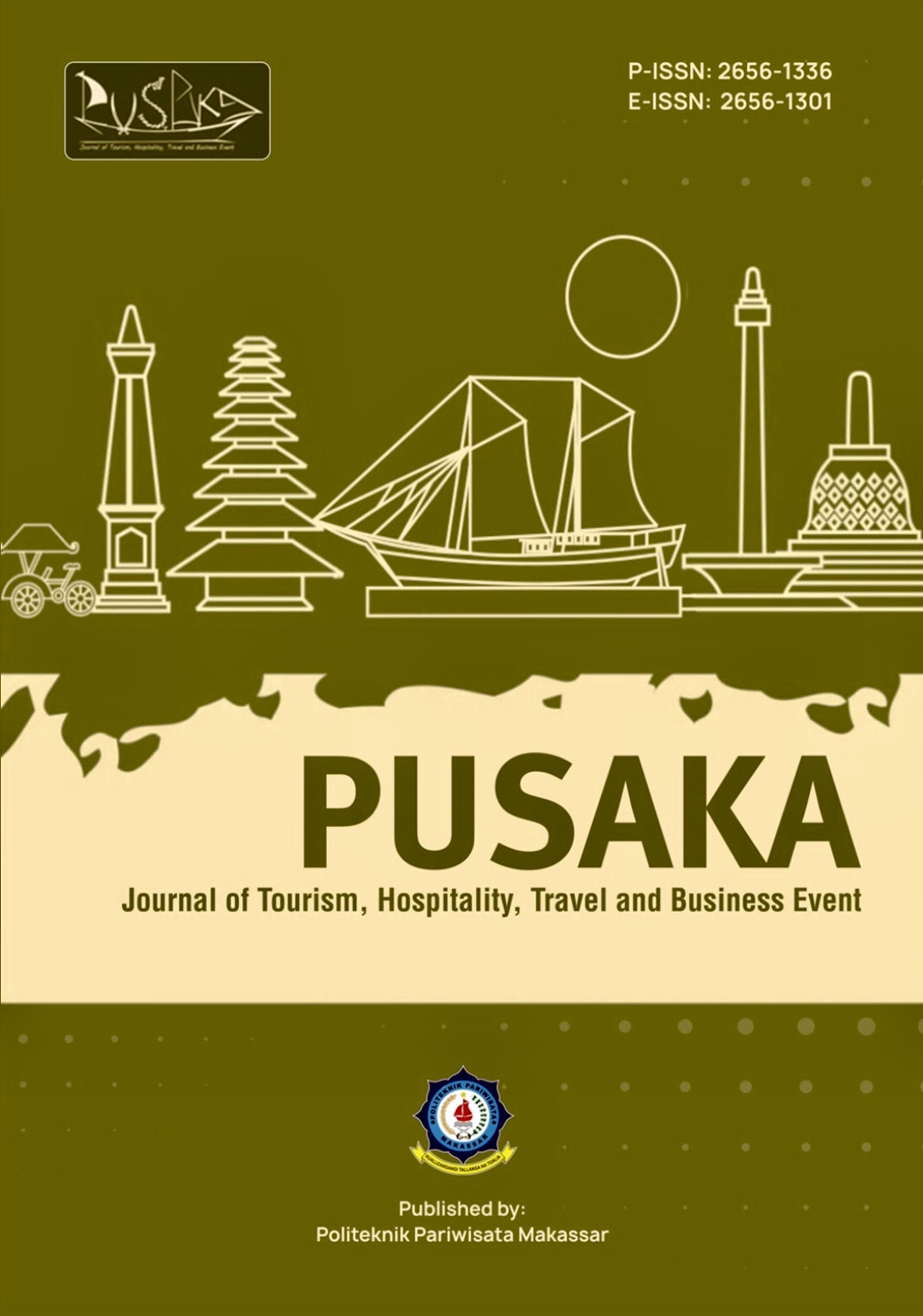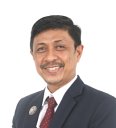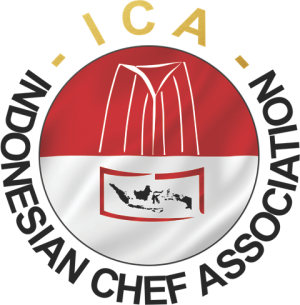Dampak Objek Wisata Kebun Raya Massenrempulu Enrekang Terhadap Kehidupan Sosial Budaya Masyarakat Batu Mila Enrekang
DOI:
https://doi.org/10.33649/pusaka.v3i2.104Keywords:
Dampak, sosial budaya, Kebun Raya Massenrempulu EnrekangAbstract
Berawal dari keberadaan kebun Raya Massenrempulu Enrekang yang memberikan dampak pada kehidupan sosial budaya masyarakat setempat. Maka, penelitian ini bertujuan untuk mendeskripsikan kehidupan sosial budaya masyarakat Batu Mila setelah adanya Kebun Raya Massenrempulu Enrekang. Metode yang digunakan dalam penelitian ini adalah metode pendekatan deskriptif kualitatif. Data diperoleh melalui wawancara, observasi, dokumentasi. Hasil penelitian ini, menunjukkan bahwa keberadaan Kebun Raya Massenrempulu Enrekang, memberikan pengaruh positif atau dampak positif bagi masyarakat setempat. Sebelum adanya Kebun Raya Massenrempulu Enrekang terutama ibu-ibu hanya menjadi ibu rumah tangga biasa namun dengan keberadaan kebun raya massenrempulu Enrekang, ibu-ibu IRT menjadi pegawai tetap di kebun raya, memiliki penghasilan tetap setiap bulan. Selain itu, berdampak pula terhadap gaya hidup masyarakat yang terlihat dari aktivitas olahraga yang mereka lakukan di Kebun Raya Massenrempulu Enrekang, Kebun Raya Massenrempulu Enrekang dijadikan sebagai tempat refreshing, rekreasi, kumpul-kumpul, foto-foto. Implikasi lainnya adalah berdampak terhadap hubungan sosial masyarakat yang semakin dalam dan akrab. Sebagai tempat konservasi tumbuh-tumbuhan Kebun Raya Massenrempulu Enrekang memberikan dampak pendidikan dimana Kebun Raya Enrekang dijadikan sebagai tempat penelitian mahasiswa dan anak sekolah.
References
Argyo Dermatoto. (2008). Strategi Pengembangan Objek Wisata Pedesaan Oleh Pelaku Wisata di Kabupaten Boyolali. Surakarta: Laporan Penelitian Universitas sebelas Maret Surakarta.
Dewa. (2011). Wacana Kontemporer Pariwisata. Jakarta: Salemba Humanika.
Hasbi, A., & Badollahi, M. Z. (2019). Analisis Partisipasi Masyarakat Dan Pemerintah Dalam Pengembangan Sektor Pariwisata Kabupaten Bone, Sulawesi Selatan. PUSAKA (Journal of Tourism, Hospitality, Travel and Business Event), 1(2), 15–27. https://doi.org/10.33649/pusaka.v1i2.15
Irianto. (2011). Dampak Pariwisata Terhadap Kehidupan Sosial dan Ekonomi Masyarakat di Gili Trawangan Kecamatan Pemenang Kabupaten Lombok Utara. Jurnal Bisnis dan Kewirausahaan, 7(3): 188-196.
Isbandi Rukminto Adi. (2015). Kesejahteraan sosial (Pekerjaan Sosial, Pembangunan sosial dan kajian Pembangunan. Jakarta: PT. Raja Grafindo Persada.
Kartini La Ode Unga. (2011). Strategi Pengembangan Kawasan Wisata Kepulauan Banda. Tesis Magister Program Studi Perencanaan dan Pengembangan Wilayah. Makassar: Universitas Hasanuddin.
Moleong, Lexy J. (2007). Metodologi Penelitian Kualitatif. Bandung: Rosdakarya.
Nyoman. (2006). Ilmu Pariwisata Sebuah Pengantar Perdana. Jakarta: PT. Pradinya Paramita.
Silalahi. (2009). Metode Penelitian Sosial. Bandung: PT. Refika Aditama.
Sugiyono. (2008). Metode Penelitian Kuantitatif dan Kualitatif dan R&D. Bandung: Alfabeta.
Suni, M., & Badollahi, M. Z. (2020). Strategi Diversifikasi Atraksi Budaya Dalam Mendukung Pengembangan Wisata Desa Wakatobi. Publik (Jurnal Ilmu Administrasi), 9(1), 25. https://doi.org/10.31314/pjia.9.1.25-33.2020
Sztompka. (2005). Sosiologi Perubahan Sosial. Jakarta: Prenada Media.
Pitana & Diarta. (2009). Pengantar Ilmu Pariwisata. Yogyakarta: Andi.
Puspitaningtyas dkk. (2011). Lima Tahun Pembangunan Kebun Raya Massenrempulu Enrekang. Enrekang: Pemkab Enrekang dan Pusat Konservasi Tumbuhan Kebun Raya Bogor-LIPI.
Yesser. (2011). Studi Dampak Pariwisata Bukit Batu Kabupaten Kosongan di Tinjau dari Aspek Ekonomi, Sosial Dan Budaya. Jurnal Perspektif Arsitektur, 6(2): 23-33
Downloads
Published
How to Cite
Issue
Section
License

This work is licensed under a Creative Commons Attribution-ShareAlike 4.0 International License.






















